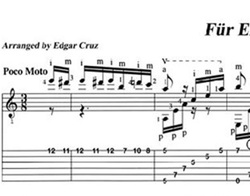Accidentals

Let's say you were playing a popular Beethoven composition known as "Für Elise" and you see the following:
The Natural Sign

Look at the seventh note in this example. There's a new symbol in there we haven't seen yet. It's called a natural sign and it is used to "cancel" out the sharp written before it.
More Accidentals

There's one more symbol we need to learn about. Let's say you're playing "The Most Wonderful Time of the Year" and this example is what you see:
Flat Signs

The new symbol we have here is called a "flat." A flat lowers a note by one-half step and will be essential if you want your "scary ghost stories and tales of the glories" to sound right!
Wolfgang Amadeus Mozart

(1756-1791, Austria) Considered by many to be the greatest composer of classical music who ever lived. He was only eight years old when he wrote his first symphony, and would eventually write 600 pieces of music, among them such favorites as Eine Kleine Nachtmusik as well as the operas Don Giovanni and Marriage of Figaro.
A few pages ago, you played a chromatic scale involving the white as well as the black keys. This is what it looks like written down (with names of notes written underneath):
Well, that's just fine if the chromatic scale is ascending... but what if you want to come back down, like this:
And the chromatic scale, descending, will be written like this:
Now try it yourself: go to the virtual piano at http://www.bgfl.org/bgfl/custom/resources_ftp/client_ftp/ks2/music/piano/index.htm and play a chromatic scale, descending this time like we have shown you!
Questions or problems? You may contact us at [email protected]




